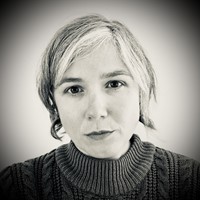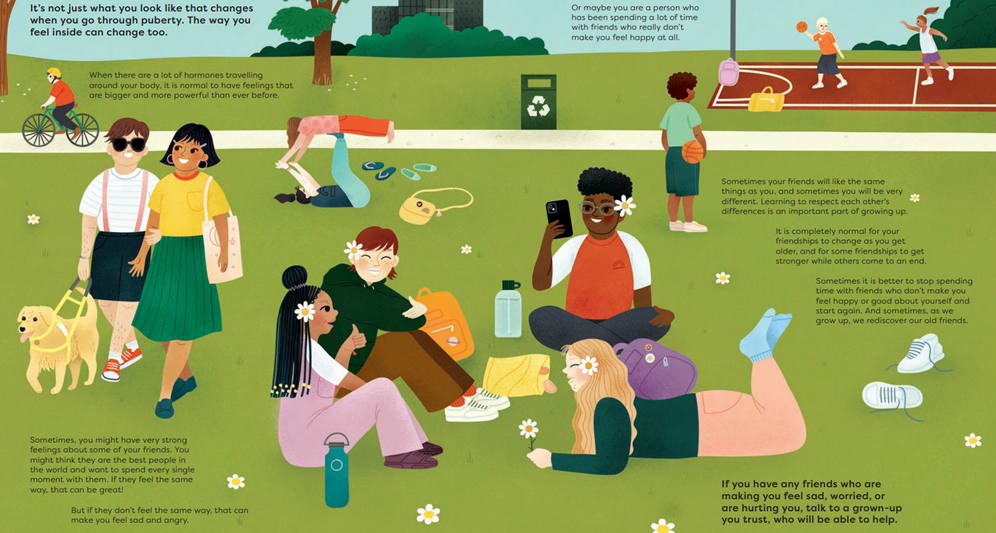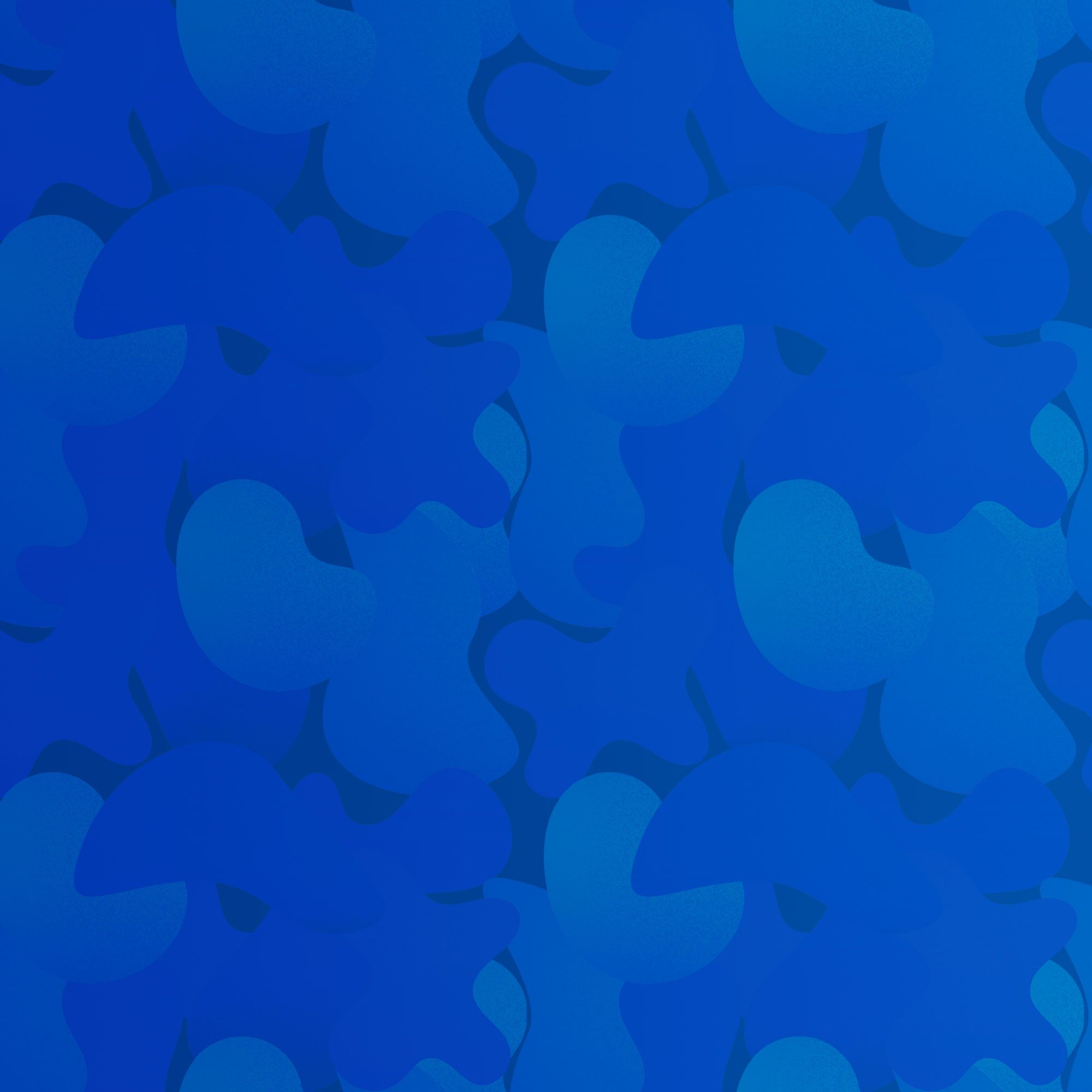Rachel Greener


About Author
Rachel Greener is a children's books editor from London who has written and edited fiction, non-fiction and picture books about everything from the ancient Egyptians and ocean plastics to teenage detectives and zombie goldfish. She wrote this book because she thinks it is important that all children have a chance to see themselves reflected in a book about puberty.
Clare Owen is a UK-based illustrator who graduated from art school in 2009 and has been working as a freelance illustrator ever since. Clare works on a variety of fun projects, creating pictures and patterns for home products, stationery, books and magazines - all influenced by her love of colour, nature and mid-century design. From Cornwall, she now lives in Bristol with her boyfriend and two cats.
Interview
Growing Up: An Inclusive Guide to Puberty and Your Changing Body (Nosy Crow)
May 2023
Nosy Crow's inclusive guides to Making a Baby and to Growing Up, written by Rachel Greener and illustrated by Clare Owen, have been created to answer the questions that young children aged six or seven plus might have about where babies come from, and what happens to our bodies during puberty.
Rachel Greener tells ReadingZone what inspired her to write these guides, what makes the books so inclusive, and how parents and teachers can use the guides to answer children's questions about where babies come from and to help them understand the changes they will go though as they grow up.

Q&A with Rachel Greener
1. Can you tell us how you started writing for children, and what inspired your inclusive children's guides to Making a Baby and Growing Up?
I've worked in children's publishing for over 15 years under my maiden name, Rachel Kellehar, and over that time, have written a lot of children's books. When you write as an in-house author, you don't always put your name on the cover, however with Making a Baby and Growing Up, they felt so important and personal to me I wanted to make sure everyone knew I had written them.
The inspiration for Making a Baby actually first came from a job interview. I was on maternity leave with my first child and talking to Nosy Crow about coming to work for them and running their children's non-fiction list, when Kate Wilson, the Group CEO, asked me to come up for an idea for a non-fiction book for children I thought was necessary, but didn't exist.
As a new parent, babies, and how families begin was a topic that was very much on my mind. I decided to research the kinds of books that were on sale for children explaining how babies are made and families begin, and was surprised to find that so many family stories (IVF, surrogacy or adoption, for example) were obscured or suppressed. The simple, practical scientific facts of how babies are made also seemed surprisingly hard to come by for young readers, and so I decided that a book that was necessary but didn't exist was a book that explained, in simple scientific terms, exactly how babies are made, and that puts every kind on conception, birth and family unit on an even playing field.
At its heart, this book is founded on the belief that every child deserves to see themselves and their family story reflected in a book about how families begin. I presented the idea, got the job, and a few years later, Making a Baby was born.
With Growing Up, once again, the inspiration was to create a book that was necessary but didn't exist. A book I now needed for my now almost seven-year-old child, and which would support the new PSHE curriculum (as of 2020) with regards to teaching primary aged children about what to expect as they and their peers grow up. The book needed to be accurate, simple, accessible and to reflect its audience. The aim was to create a book in which every child feels seen, and which also allows children to understand that everyone's experience of puberty will be unique.

2. Who are the books aimed at, and what will children learn about in each book?
These books are aimed at newly independent readers aged six-plus, although I think both are accessible to a younger audience when read with support from an adult, and are particularly relevant to readers aged seven-to-nine.
In Making a Baby, readers will find out exactly what is needed to grow a baby, from introducing the basic building blocks of life such as sperm and eggs, to explaining the different ways these building blocks can be put together to make a family. It also covers sex, sperm and egg donation, IUI, IVF, surrogacy and adoption, as well as explaining how a baby grows in the womb and about different kinds of births including c-sections.
In the further reading section at the back, we have included information about babies who do not fall into binary biological sex categories at birth, as well as a very basic introduction to the concept of gender identity. Other subjects explored in this section include miscarriage and premature birth.
We have tried to keep the language throughout the book as simple, friendly and accessible as possible, so while you won't see the terms IVF, IUI or miscarriage used on the pages, we have included a glossary to explain any complex words readers may encounter within the book.
Growing Up is a particularly important book for the seven-to-nine-plus readership, as many children will start to experience aspects of puberty from as young as age eight. Working closely with a leading national LGBT organisation as well as a biology specialist and an equality, diversity and inclusivity consultant, Growing Up covers everything from biological sex to hormones, physical changes and emotional development. It also includes pages on friendship, creating and respecting emotional and physical boundaries and online safety.
Like Making a Baby, Growing Up also includes a further reading section and glossary to explore more complex questions about gender identity, cyberbullying and online safety, as well as signposting where young readers can find help from trusted sources outside of the home or school environment.

3. Why did you feel it was important that both these guides are inclusive?
In children's publishing, we often talk about creating 'mirrors' and 'windows' in our books. 'Mirrors' enable a child to see aspects of their own experience reflected in a book, while 'windows' give children the chance to see and understand that other people's lived experiences might not be the same as their own.
Understanding that your own life story is just one of many, and that everyone's stories are different, promotes empathy and curiosity from a young age. As we all know, empathy is the key ingredient for creating a kinder, fairer worldview as children grow up.
Every child and their story is unique, and that is why trying to make the books as inclusive as possible was so important to me and to everyone at Nosy Crow.
4. So the books are for all children, not specific groups?
The word inclusive is intended to make it clear that these books are for all children and families. All children are created from an egg and a sperm, grown in a womb, and will go through puberty, and the aim was to create books that works for everyone. Hopefully every child reader will be able to find at least some aspects of their own experience reflected in these pages, and will also gain a deeper understanding of how other people's families may have begun, or what someone else may be experiencing during puberty.

5. How did you go about researching these books to ensure that the facts were correct and that the books are diverse and inclusive?
As well researching each topic as thoroughly as possible, I worked with a number of editors and consultants while writing both books, including midwives, cell biologists, science teachers, equality, diversity and inclusion consultants and LGBT+ organisations. I also worked with a range of focus groups and individual readers, from teachers, parents and children to sensitivity readers, who reviewed the work in progress and gave constructive feedback.
6. How would you like children to be introduced to the guides? What discussions would you like to follow?
We have some really useful notes and resources on the Nosy Crow website suggesting how to introduce children of different ages and reading abilities to these books. The intention was to create books that parents and carers would feel happy to have on the bookshelf at all times, alongside all the other picture books and non-fiction titles, so the child can have control of when they pick up the book and want to find out more.
Making a Baby: Notes for Parents and Carers
Growing Up: Notes for Parents and Carers
Growing Up: Notes for Teachers
7. What do you feel Clare Owen's illustrations add to the guide?
These were really, really challenging books to illustrate, and we needed someone sensitive, thoughtful and creative to come up with ideas for how we were going to introduce complex concepts visually to young children for (possibly) the first time. Clare has the most incredible natural talent for integrating scientific imagery seamlessly within warm, child-friendly scenes, and I just love how body positive her artwork is and how she captures the joy and individuality of every character in each book.
While we gave Clare reference images for the more technical aspects of the drawings, the children and parents you see in the books are very much guided by her own brilliant imagination. The artwork is just as important as the text (if not more so!) in creating a 'mirror' to reflect a myriad of lived experiences, as well as providing a 'window' for children to see and engage with experiences unlike their own, and Clare has just done the most marvellous job of creating a really diverse and engaging cast to carry readers through the books.
It goes without saying that these books would not have happened at all without the hard work of our brilliant designer, Holly Phillips, who came up with the cover designs and who worked so closely with both Clare and I to create such friendly, accessible and easy to navigate books.

8. Do you have other inclusive guides planned?
I do have a very early idea for something new in the series, but I don't want to share it while it's still so early in development. In my current role as publishing director for the preschool and non-fiction lists at Nosy Crow, I spend a lot more of my time in meetings these days than writing and editing books, so it might take me another three years to get this one off the ground!
 Growing Up: An Inclusive Guide to Puberty and Your Changing Body
Growing Up: An Inclusive Guide to Puberty and Your Changing Body
 Making A Baby: An Inclusive Guide to How Every Family Begins
Making A Baby: An Inclusive Guide to How Every Family Begins
